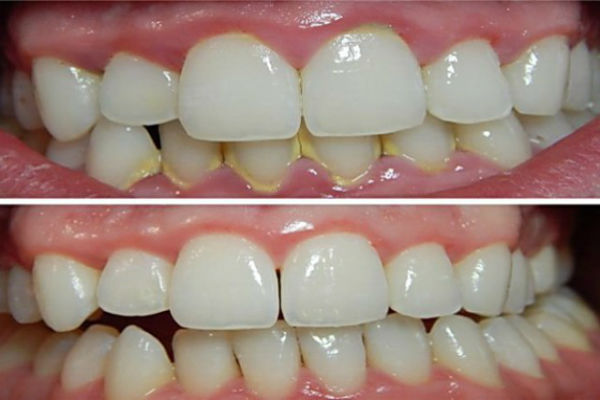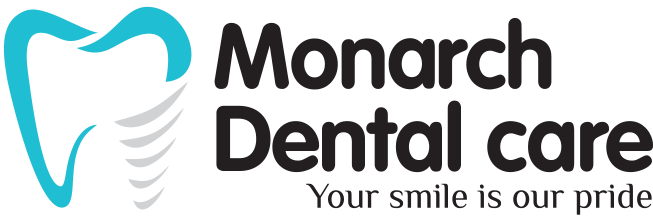Periodontal Treatment
Periodontal diseases also known as gum diseases are some of the most common infections in the world next to respiratory infections. It is left undiagnosed as periodontal disease is usually painless, with few obvious symptoms in its early stages. If it is left untreated, periodontal disease can eventually result in tooth loss. In fact, periodontal diseases are now the leading cause of tooth loss in adults. Despite the number of people infected with this disease, most believe they don’t have them. Inspite of all these facts, periodontal diseases are also some of the most preventable diseases, you need to understand what causes them, practice good oral health habits and seek regular professional case.

How does Periodontitis develop in the first place ?
The term ‘periodontal’ means ‘around the tooth’, and in a normal, healthy patient, what you will find around the tooth is healthy gum tissue, which fits snugly and protects both the tooth and the bone below it. If you look closely in the mirror, you’ll see a v-shaped crevice where the tooth meets the gum line. In a healthy patient, this is less than 3 millimetres in depth, where your toothbrush can easily penetrate it and clean the space. When periodontal disease attacks, however, this crevice becomes deep and more difficult to clean. It’s also an ideal space for bacteria to thrive in, and if left untreated, you can eventually be faced with tooth loss. Thats why it's important to keep your gums healthy, and fitting neatly around each tooth for added protection.
The biggest threat to your gum tissue is the sticky form of bacteria that forms on your teeth, called plaque. If this plaque is not removed by brushing twice a day, along with flossing or using interdental brushes, it starts to absorb some of the minerals in your saliva and combine with the saliva to form a hard matter called tartar which can be felt with your tongue. If it happens to you, normal brushing won't remove it and you need to visit your dentist for a professional cleaning.
What are the symptoms of periodontal disease ?
You can check for some of these symptoms yourself, but in case you miss them, regular visits to your dentist will make sure that they’re spotted and addressed immediately.
- Bleeding gums when you are brushing or flossing. Remember that healthy gums should never bleed.
- Signs that your gums are pulling away from your teeth, which can expose the roots of the tooth.
- Gums that become tender or red or swollen.
- Bad breath (particularly when you haven’t experienced it regularly in the past).
- The formation of pus between teeth and gums.
- A change in how your teeth fit together when you bite.
- A loosening of the teeth.
In the initial stages of Periodontal Disease known as gingivitis your gums may become red or swell up or bleed when you use your toothbrush. It is easily treatable at this stage, but if you ignore the symptoms, it will eventually become full-blown periodontitis. In the advanced stages of periodontal disease, you may experience pain, but by that stage, it may be too late to successfully treat the condition, so please don’t wait till you experience pain.
How is this periodontal disease treated ?
If condition is addressed at the stage of gingivitis, treatment is very successful with no long-term damage. We carry out a thorough Cleaning and advise you on how to improve your dental hygiene regime.
If the disease progresses further then a process known as Periodontal Scaling and Root Planing is done. We use a small scaler, combined with a special antimicrobial solution. This removes not just any plaque that’s formed, but also the tartar. Once we’ve removed the tartar, we plane the root surfaces to make sure that bacteria and plaque are discouraged from accumulating further. For more serious cases, the Periodontal Scaling and Root Scaling process may also involve inserting time-released antibiotics into the ‘pocket’, to reduce any inflammation and speed up the process of healing.
What are the different types of periodontal surgical procedures ?
In cases where gum disease (periodontitis) cannot be cured by treatment with antibiotics or root planning and scaling, then your dentist may need to perform periodontal surgical procedures.
The different types of surgical procedures include curettage, gingivectomy, flap surgery, bone grafts, GTR, splinting, cosmetic gum surgery and papilla reconstruction.
What is gingival curettage ?
In cases of long standing gum infection, the tissues inside the gums absorb bacterial toxins and become diseased. Under local anaesthesia, the diseased gums are scraped away from the inside, thus restoring the health of the gums.
What is gingivectomy ?
In cases where periodontitis cannot be cured by treatment with antibiotics or root planning and scaling, then your dentist may need to perform a gingivectomy. The treatment removes and reshapes any loose or diseased gum tissue that may have formed between the teeth and the gums. The procedure is carried out under local anaesthesia and loose gum tissue may be removed with laser treatment. To help your gums heal afterwards, your dentist can put a form of dental putty over the gum line, but you can eat soft foods while this is in place. It will typically take a few days to over a week in some cases for your gums to fully heal. If you're experiencing any pain, you can take some over-the-counter painkillers.
What is flap surgery ?
This surgical procedure is used by the periodontist to smooth / correct defects and irregularities in the bone surrounding the diseased teeth with the ultimate goal of eliminating periodontal pockets. The procedure is as follows:
- Once the area is made numb with local anesthesia, we flap / raise the gum back so that we can visualize the amount and type of bone loss. We can also visualize tartar that may be attached to the roots.
- We then remove the tartar and scoop out the diseased tissue from the bone defects. This infected material / tissue is basically responsible for the progression of your gum diseases. Next, we use hand instruments called Curettes to smoothen your root surfaces.
- Once the bone defects are contoured and your root surfaces are cleaned, the gum is placed back in its original position and stitches are placed.
- Postoperative instructions are then given to teach you how to take care of the area so that as little discomfort will take place as possible.
What are the precautions after gum surgery ?
Post surgical Instructions include:
- Bleeding: Some bleeding may occur within the first 24 hours following surgery. This is normal. If this should occur, apply gentle pressure to the area with a piece of sterile cotton or wet gauze.
- Working-Exercise: You can carry out your normal routine activities like going to work etc., but avoid any kind of strenuous exercise.
- Diet: You are recommended to follow a soft and cold diet for a few days. Avoid consumption of hot beverages for atleast 2 to 3 days after surgery. Preferably, chew from the other side which is not surgically treated.
- Smoking - Alcohol: Alcohol should be restricted during the first 48 hours following surgery. Please abstain from smoking for atleast 2 weeks after surgery as smoking has been shown to slow down the healing process.
- Medication: If any medication has been prescribed for comfort and/or the prevention of infection during the healing process, please follow the directions carefully.
- Ice Packs for Swelling: If there is any swelling, ice packs should be applied to the area during the first four hours after surgery (use 15 minutes on 15 minutes off). Some swelling can be expected during the first 24 hours.
- Saltwater Rinse: Using teaspoon of salt in a glass of warm water, you may rinse the treated area gently. Rinsing several times in the first twelve-hour period will help keep your mouth fresh and odor-free. However, vigorous rinsing should be avoided in the first 24 hours.
- Brushing: Try to avoid brushing over the surgical area for at least 5 to 6 days after surgery as it may dislodge or loosen the sutures. Brushing can be started once the sutures are removed. Meanwhile the area can be kept clean by massaging the area with the finger and paste and also with the help of a mouthwash.
- Surgical Dressing: If necessary a periodontal dressing will be placed over the treated area which protects the surgical site and should remain in place for approximately one week. Small pieces may break off but this should be of no concern. However, if the complete dressing should come off within three days, please call to have it replaced. If this should occur after the fourth day, there is no need for concern so long as there is no discomfort. Continue to rinse the area with warm salt water until your next appointment.
Is flap surgery a permanent cure?
You may be prone to periodontal diseases that require constant and careful attention and like other chronic diseases, such as diabetes, hypertension and asthma, there is no permanent cure. Periodontal surgery helps control disease and prevents further destruction to the gums and bone, thereby minimizing tooth loss. Regular check-ups would ensure less chances of tooth loss.
Periodontal Surgeries at Monarch Dental Care
Periodontal surgery has evolved with newer techniques and materials advancing the art and science of dentistry. Regeneration is a present concept where the tissues that are lost due to periodontal disease are reconstructed to a certain extent using newer and advanced techniques. Various methods of regeneration used at Monarch Dental Care are Bone Grafts and Guided Tissue Regeneration. These procedures are done in our clinic in a cost effective way according to your needs. For more information call on 8137999943 / 9446239984 or email us your query on info@monarchdentalcare.in for further information.
